Unearthing Complexity: linking Drivers and Impacts of Extreme Drought in the Amazon
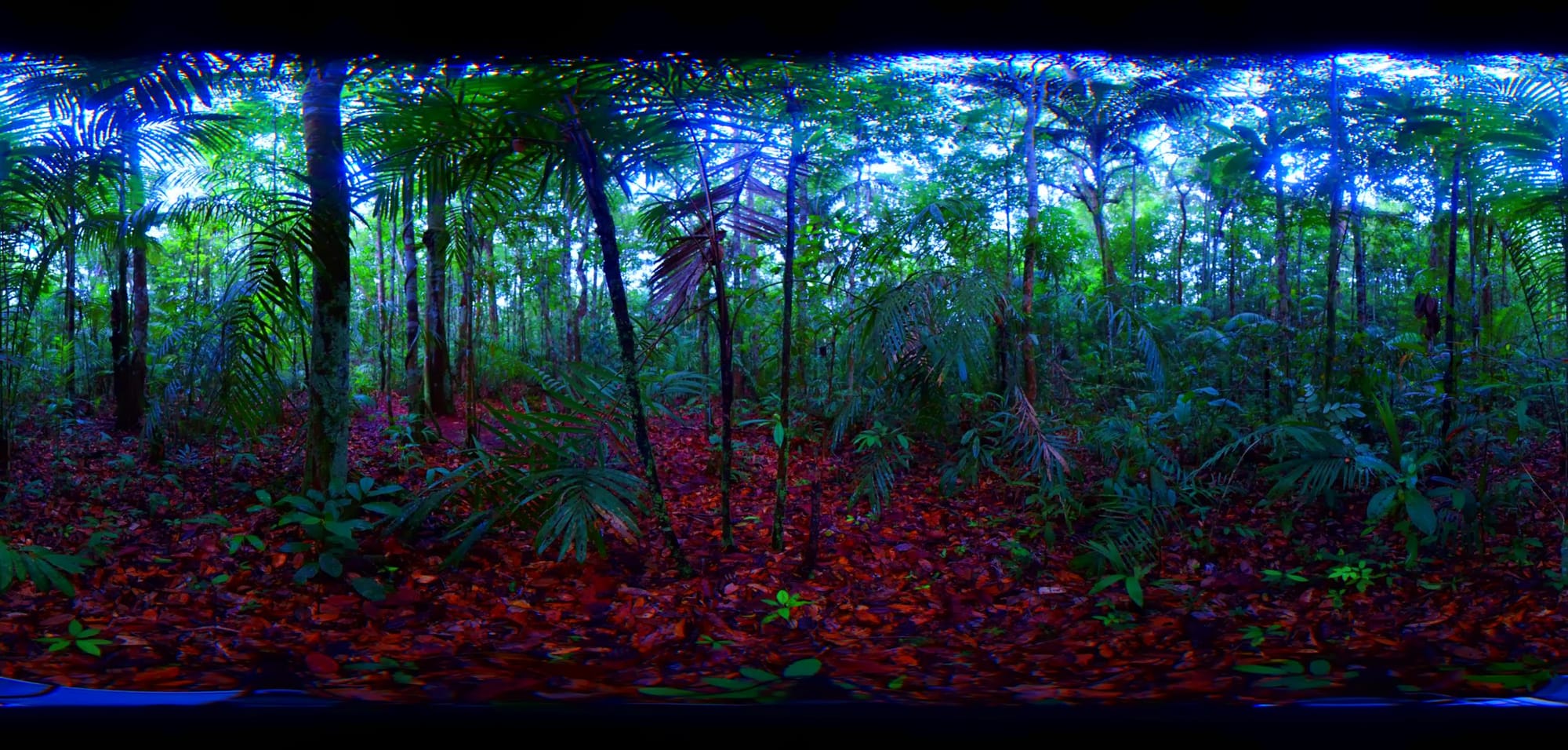
By Simon Handy, Institute for Environmental Security
The Hague, 5 November 2024
“It seems that large segments of the world community are in denial about the ecological suicide they are committing. This is exemplified by the destruction of the Amazon, a pillar of the global ecology, willingly and knowingly. President Lula of Brazil, active member of the BRICS and friend of Putin, on the one hand says he wants to keep the Amazon intact and the livelihoods of the indigenous communities preserved. On the other hand, he announces the asphalting of a major road right through the rainforest, a certain recipe for the demise of the forest and its inhabitants. He is right to demand international compensation for the protection of the largest forest on earth, but he is dead wrong to send in the bulldozers at the same time.
On 19 October 2024 the New York Times published an incisive article on the current Amazonian drought. That was a “cue” for our institute to write the article here-under following our statutory goal to contribute to the maintenance of the life-supporting ecosystems around the world for the survival and well-being of man and nature, the community of life.” - Wouter J. Veening, President, IES
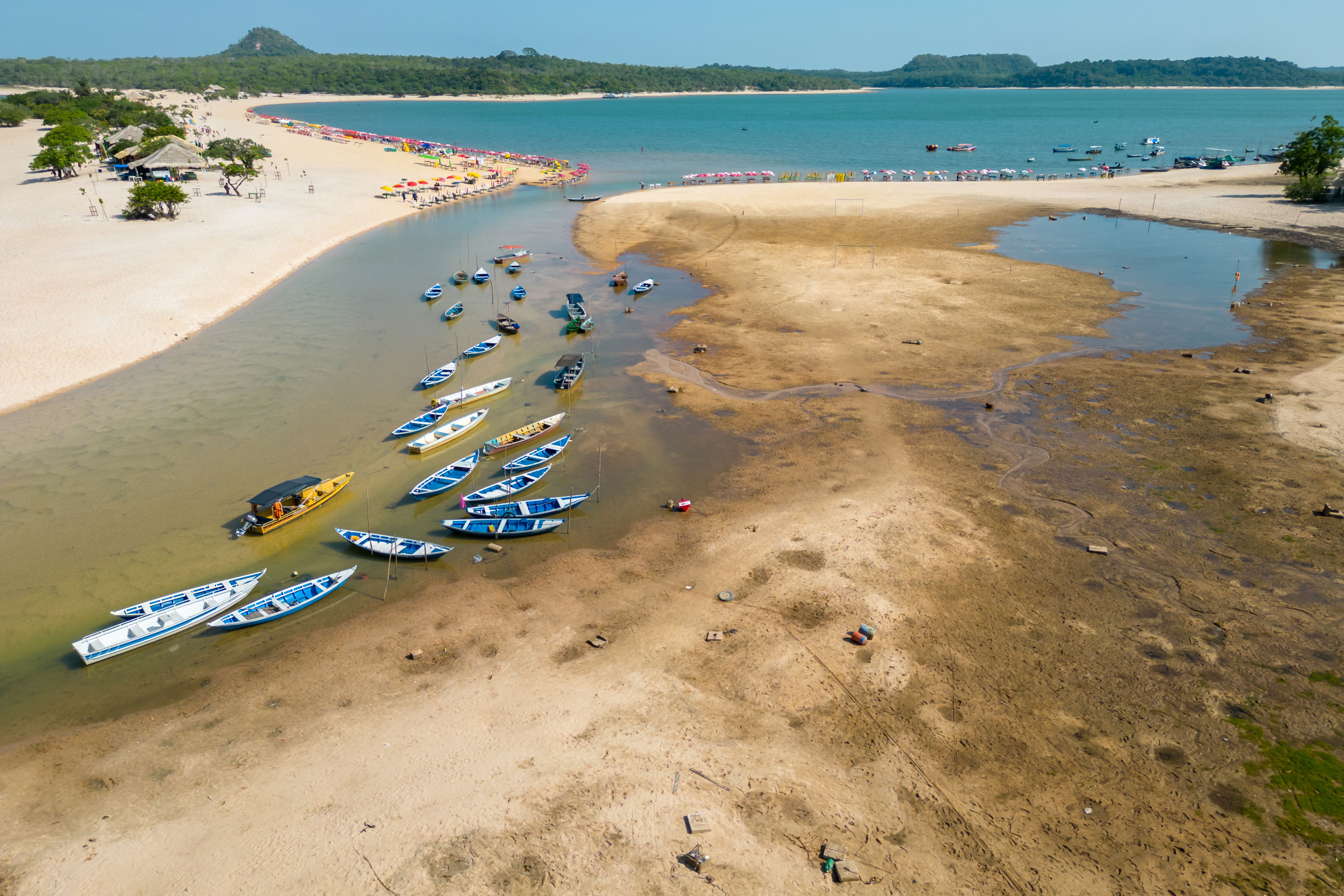
Small boats stranded in the nearly dry bed of the Tapajos river in Alter do Chao, Santarem, Brazil, during the amazonian drought in the second half of 2023. Image by Getty Images via SITE123.
Nearly 2 years of drought conditions pushing energy infrastructure to breaking point, rivers drying up, becoming impassable for boats and destroying fisheries, and smoke from wildfires engulfing entire cities – this is the current situation across much of the Amazon basin, according to a recent New York Times article.[1] The result of a strong El Niño, amplified by climate change, this devastating drought is a sign of what’s to come. Although deeply troubling, it also teaches us about the future, allowing us to draw valuable insights which can inform both adaptive and mitigative action.
The article, An Alarming Glimpse Into a Future of Historic Droughts, identifies impacts of the drought which are in fact self-reinforcing (“positive”) feedbacks which exacerbate the problem. These can and must be learned from in order to ensure the survival of the Amazon rainforest and to protect the immense biodiversity it harbours, the carbon it stores, and the tens of millions of people it directly supports. However, there is a glaring omission in the picture painted by the article which is key to understanding the current crisis – the role of widespread, often criminal, agricultural and extractive activity which has greatly reduced the resilience of the rainforest.
It is right to focus on the climate change fuelled El Niño and record high temperatures in the North Atlantic, as these are the primary drivers of the present drought. But, the depth of the resulting disaster is a function of the social-ecological resilience of the Amazon, something which has been deeply eroded in recent decades by industries often closely linked to criminal activity. This erosion is setting us on a trajectory towards an irreversible tipping point which could trigger a cascading collapse of vital Earth systems, so it is essential that these complex drivers of degradation are also understood and combatted.
Teetering on the Edge
The Amazon rainforest is considered to be “bi-stable.” This means that it has more than one possible stable state: profoundly complex, biodiverse, and climate sustaining rainforest, or comparatively impoverished dry savannah with a fire-driven ecology. [2]
The current rainforest system state is sustained thanks largely to the ability of forests to produce their own weather. They do this by releasing water vapour and fungal spores into the atmosphere to form clouds. Then, it rains; sustaining the plants which depend on high levels of moisture and starting the cycle again – “the rainforest depends on itself.” [3] In the Amazon, water evaporated in the north and east is carried south- and westward by the prevailing winds, allowing rains to reach parts of the continent which would otherwise be dry. [4] This miraculous positive feedback loop has ensured that the Amazon basin has been covered by forest for the last 65 million years.
However, there are other feedbacks at play. With sufficient deforestation and forest degradation (forest loss) caused by direct human activity or biophysical processes such as droughts, this feedback loop can be broken. With fewer trees the amount of vapour returning to the atmosphere is reduced, the exposed ground beneath the canopy heats up and dries out, and it becomes more difficult for moisture-dependant trees to regrow. The roots which once allowed moisture to percolate into the soil disappear, the land dries up, and the species which remain are the few which can tolerate drought and fire, creating a savannah (fig. 1).
This is already happening in the most disturbed parts of the Amazon, but it is believed that the majority of the rainforest is at risk of a potentially abrupt shift from rainforest to savannah due to non-linear interactions. That shift would jeopardise one of the most biodiverse regions on the planet, cause the release of an estimated 80 billion tonnes of carbon by the end of the century, [5] and irreversibly alter global weather systems. [6,7] Currently, critical thresholds for the Amazon are predicted to be 2oC global warming, annual rainfall below 1000mm, a dry season length of 8 months, rainfall seasonality intensity of -450mm, or 20% deforestation. [2]
Unfortunately, it doesn’t stop there. The Amazon is one of the interconnected tipping points which, if transgressed, could trigger a catastrophic global tipping point cascade. [3,8] Directly, loss of the rainforest would impact the Thermohaline Circulation and the El Niño Southern Oscillation tipping points, and, indirectly, the West and East Antarctic Icesheets. [5] Although there is a high degree of uncertainty surrounding these complex system interactions, the scale of the risk involved demands action.
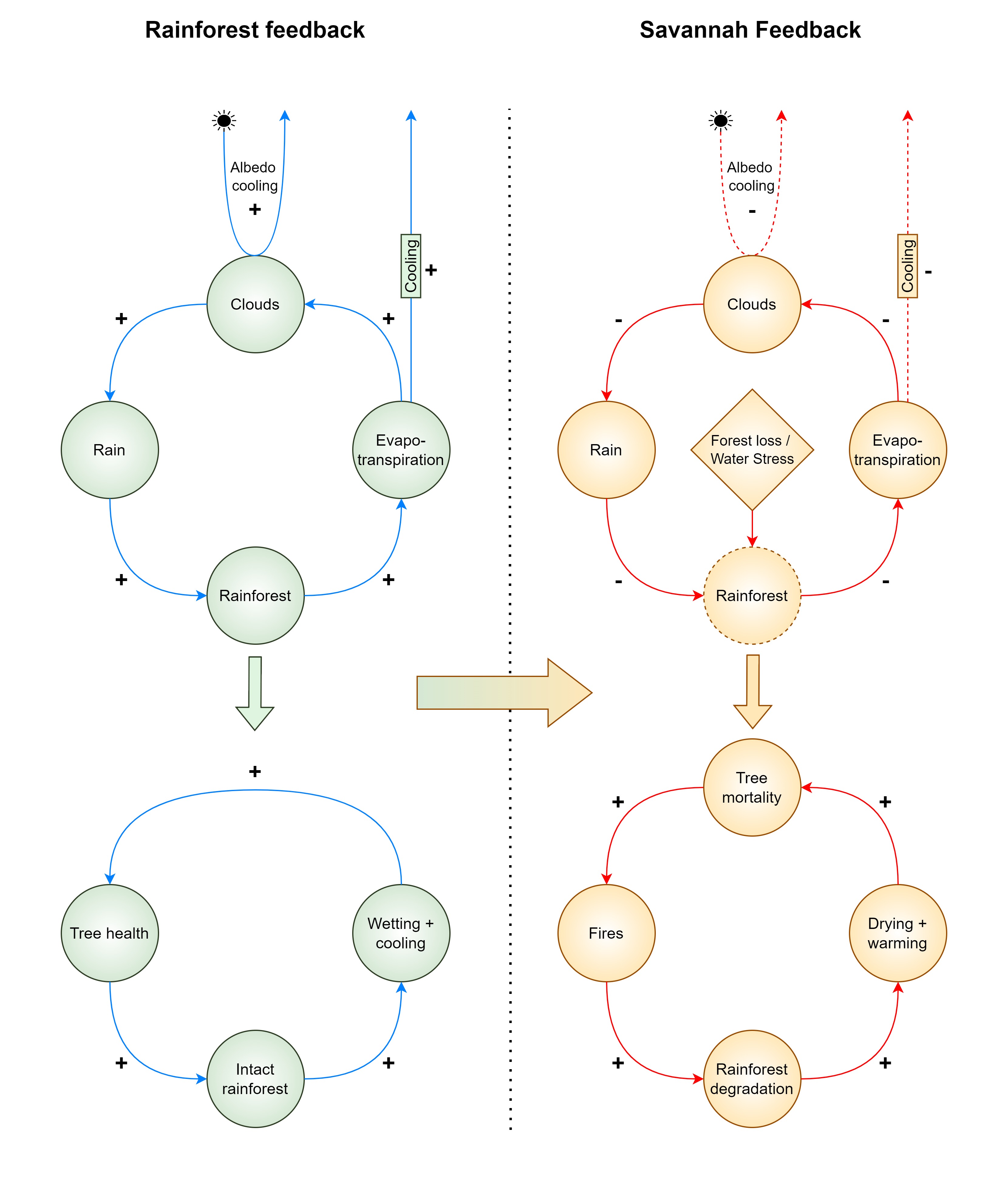
Figure 1. Rainforest vs. savannah: competing positive feedback loops in the Amazon. Source: Simon Handy, IES.
Interconnected feedbacks
The savannah positive feedback can be considered “high-level,” since many interacting sub-elements contribute to and drive the cycle of degradation. The New York Times article highlighted three impacts of the present drought which are in fact possible positive feedback loops fuelling the savannah loop as climate change advances: fire, fuel, and threats to indigenous peoples (fig. 2).
The fires have affected 39,983 square kilometres of rainforest so far this year, an area 846% larger than last year. [9,10] Unfortunately, just like how forests create the rain needed for forests to thrive, fires can create the conditions for fires to return. The scorched earth left behind dries out under the harsh sun without the protection of the forest canopy and the humid air it creates. Vegetation at the edge of these burnt areas is also exposed, drying out and becoming another potential source of fire. This cycle can be broken by the return of the rainy season, but as droughts become more common and criminals seek to burn or, increasingly, to desiccate the forest with herbicide to clear land, [10,11] this feedback gains more and more power.
Similarly, it was reported that the Colombian government is encouraging the burning of coal and gas to make up for hydroelectric energy shortfalls caused by the low river levels. Here is yet another positive feedback, albeit more indirect. There is a small short-term feedback now as CO2 released from the emergency measures make further contributions to climate change, but this is likely at a scale which is insignificant. In the long-term however, it is possible that as the frequency and intensity of droughts increase, hydroelectric energy will be perceived as more high risk across the continent. This may divert future investment away from dams and towards more reliable fossil fuels instead, driving further climate impacts.
And finally, the extreme drought is reported to have led to indigenous communities becoming isolated and experiencing water, food and medicine shortages. In addition to being a humanitarian crisis, this also points to an important feedback loop. Areas of high and strongly rooted forest governance such as indigenous territories have the lowest levels of deforestation and show higher resilience than surrounding forest. [2] So, the resilience of indigenous communities and the resilience of the rainforest are linked. Harm to the rainforest reduces its capacity to provide clean water, support biodiversity, and maintain local climate, this harms indigenous communities who depend on these provisions, and in turn they may become less able to protect their territories.
Intact rainforest reduces the likelihood of fires, ensures that the ecosystem services upon which many indigenous communities rely are not disrupted, and limits the impact of droughts and by extension the risk to hydroelectric infrastructure. These three feedback loops highlight the need to foster maximum forest resilience through protection of the Amazon, and to invest in green alternatives to hydroelectric energy now. But why is the Amazon lacking resilience in the first place?
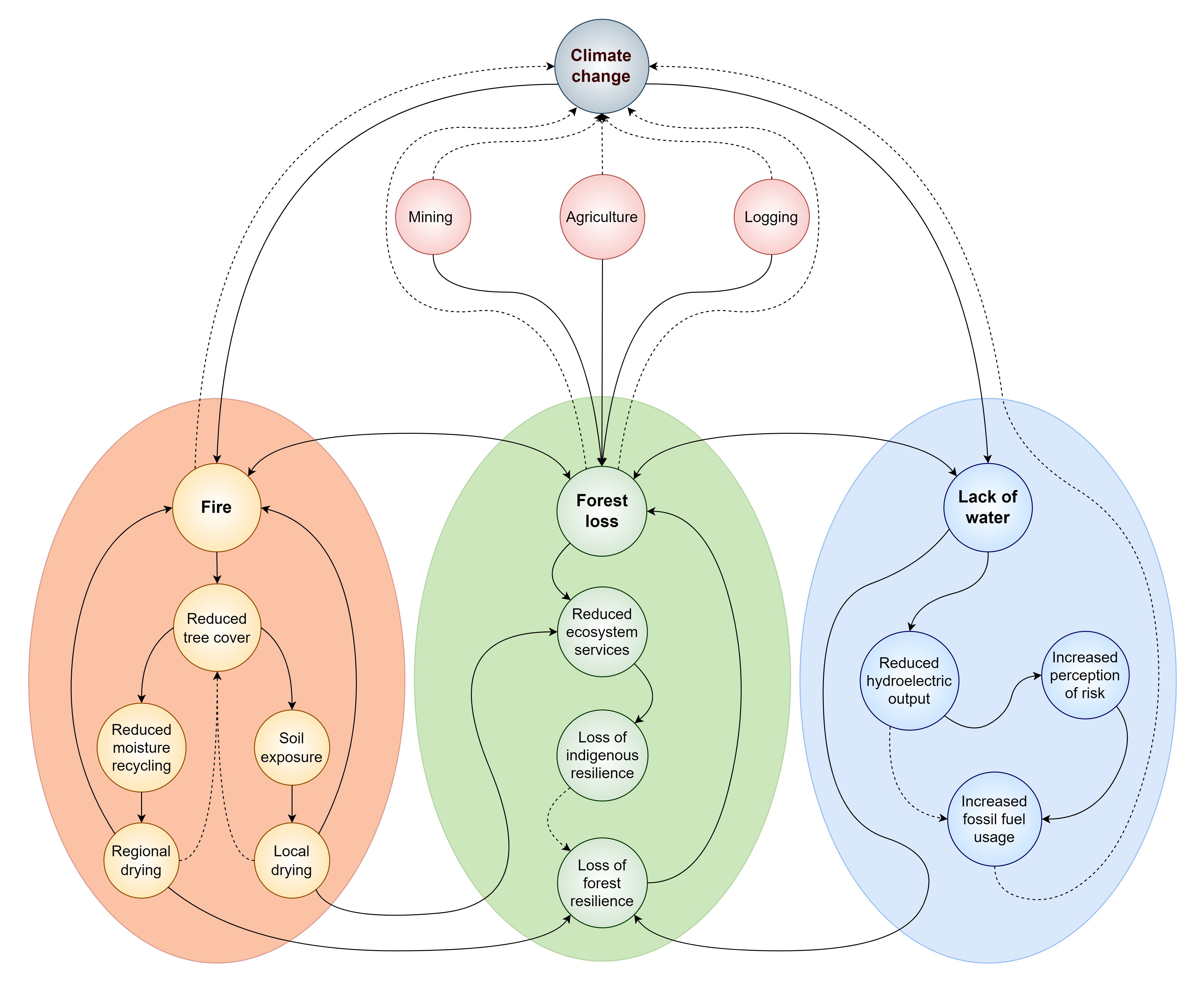
Figure 2. Interconnected drivers and feedbacks of Amazonian degradation. Source: Simon Handy, IES.
Extractive Industry and Criminal Activity
Mining, agriculture, and forestry are the main industries which have been ravaging the Amazon, both legally and illegally. By opening up the forest canopy, eroding topsoil, releasing toxic chemicals, and driving human rights abuses, these industries have been the cause of widespread losses of social-ecological resilience across the Amazon basin, making it more vulnerable to, and less able to recover from, droughts such as this.
Each industry has a different relationship to organised crime and impacts the rainforest in different ways, so an exploration of each would go beyond the scope of this article. Since our institute has had long-term involvement with efforts to limit the social and environmental harms of artisanal and small-scale gold mining (ASGM) in the Guiana Shield region of the northern Amazon, here we will use that as a case study to illustrate the impact of extractive and criminal activities on forest resilience.
The Guiana Shield
The Guiana Shield (GS) is a 270-million-hectare region in the northern Amazon, encompassing French Guiana, Suriname, Guyana, and parts of Venezuela, Colombia, and Northern Brazil. It is a global biodiversity hotspot, and it stores 18% of global tropical forest carbon and 20% of global freshwater. [12] Its high forest cover and location at the source of two major atmospheric rivers make it the lynchpin of the entire Amazon basin.
It plays a crucial role delivering moisture up to 4,000 km southwards, limiting the impacts of drying from forest loss in the rest of the Amazon, and sustaining the La Plata Basin breadbasket region. [4] However, due to the tree physiology [13,14] and poor soils [15] of the region, the GS is particularly at risk of becoming savannah. [4] Despite its profound importance and vulnerability, this region is often overlooked. Sadly, it is the region most impacted by gold mining in the Amazon [16,17] and gold mining is the primary cause of forest loss in the GS. [16,18–22]
A nexus of complex poverty drivers, organised crime, and the soaring market value of gold create the conditions which drive thousands of people into the rainforest each year to seek their fortune. The so-called artisanal and small-scale gold mining being conducted is in fact large-scale and mechanised, and it is responsible for over 90% of forest loss in the GS. [23]
Currently, an estimated 40,000 artisanal miners are operating in the GS, [24] and in 2017 it was estimated that 99% of open pit mines in the GS were operated by artisanal miners. [16] These pits are the result of forest clearance and the mining of soil using excavators and high-pressure water hoses, often along riverbanks (fig. 3). Eroded soils are washed into a slurry, and gold dust is separated from the slurry using toxic mercury. Not only does this industry cause immense environmental harm, but it is responsible for the poisoning of vulnerable miners, downstream populations, and indigenous peoples, the spread of malaria, human trafficking and prostitution, and the funding of organised criminal networks and armed groups through the laundering of cocaine profits through international gold markets. [25–30]
This smorgasbord of severe, widespread, and long-term impacts to both the forest and those who depend on it greatly reduces social-ecological resilience and is pushing the Amazon towards a tipping point particularly quickly due to the specific location and hydrological function of the GS. When a drought comes, the degraded, exposed areas of forest which are left behind after mining are most vulnerable to drying and fires – often set by criminals [10] - and the indigenous territories which should be bastions of resilience are struggling. The often-violent expulsion of local communities from their ancestral lands by export-oriented extractive industry interests can be considered as a form of genocide, comparable to similar situations in the rainforests of New Guinea, Borneo and in the Congo Basin. Indigenous resilience is deeply undermined by this slow genocide, as well as by mercury poisoning, increased rates of malaria, and the regular murder of environmental defenders, [31] weakening the entire system.
Degradation of the Amazon, as with many ecosystems globally, results in increased carbon emissions and, most importantly, it reduces the carbon sequestration capacity which provides the essential cooling function our overheating world depends on. Due to the devastation inflicted on the rainforest in recent decades, the Amazon has shifted from being a carbon sink to a net carbon source, driving further local and global warming. [32] Clearly, causes of climate change cannot be separated from its impact, as the two are often one and the same.
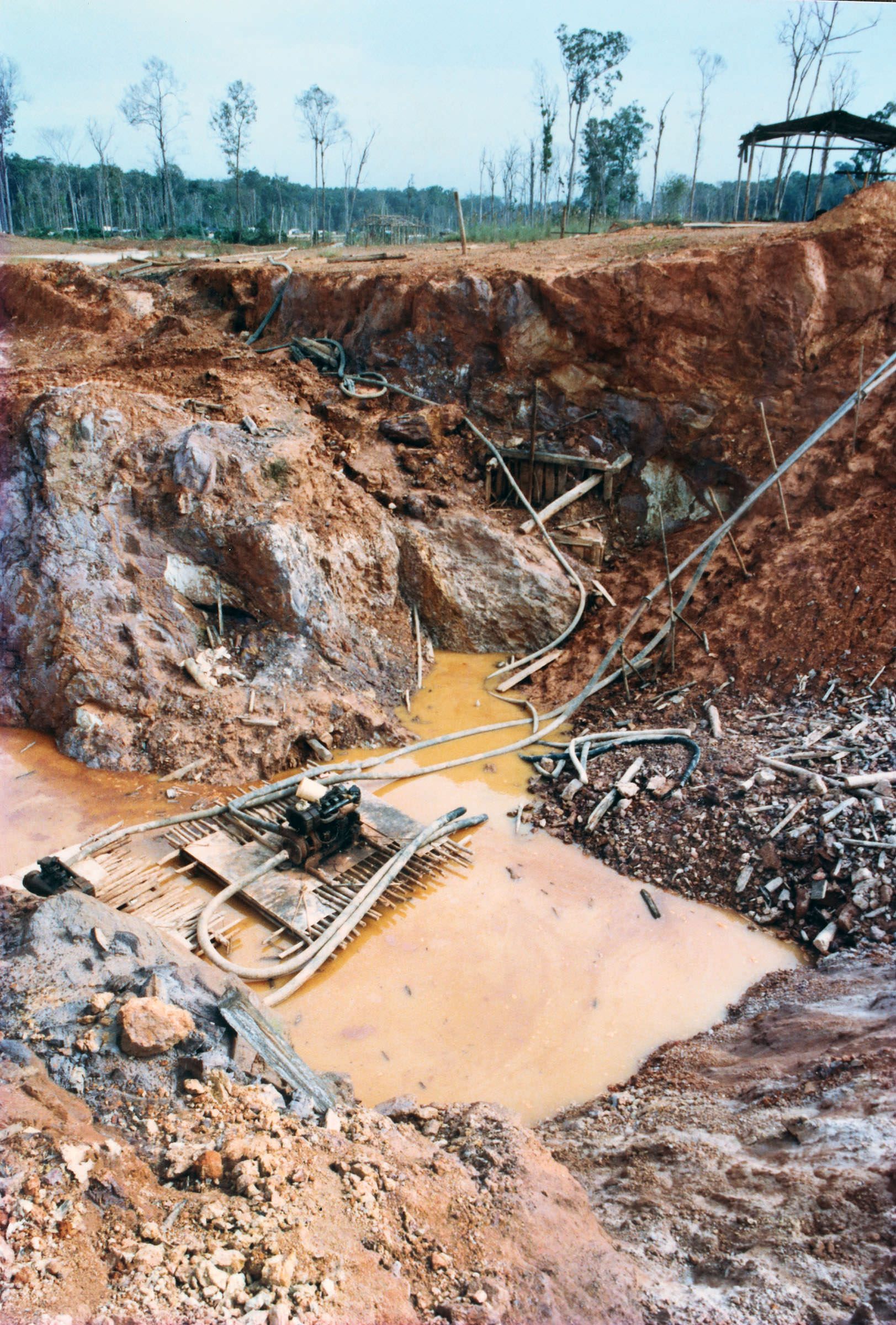
Figure 3. Cutting pump used for Alluvial ASGM in Bolivar state, Venezuela. Source: SOS Orinoco. For more context and additional images see ASM Alert - Earth Observation for Mining Detection
Beyond the Climate Crisis
It is true that climate change is driving the present drought, but the effects of climate change are not landing on a blank canvas of pristine rainforest. Global demand for Amazonian products such as gold have undermined the capacity of the rainforest to cope with stresses; armed criminal groups fuelled by international demand for narcotics prevent effective governance; and ineffective policy, trade regulations, and environmental law enforcement around the world continue to facilitate the Amazon’s destruction. This complexity is obscured when a simple, linear narrative is sought.
This article demonstrates that climate change and its effects cannot be understood independently from the complex social-ecological systems from which it has emerged and upon which it now reciprocally acts. And yet, not only do we find this complexity neglected in an otherwise brilliant and timely article from the New York Times, but we can see this attitude clearly reflected all around us. Indeed, the apolitical and abstract term “climate crisis” obscures the role of the actions of industrialised people and those they exploit globally, knowingly or otherwise, and focuses attention on carbon emissions while obfuscating other drivers.
The current COP16 UN biodiversity conference currently taking place in Colombia is another fine example, as it is occurring independently from the COP29 climate conference, despite their interdependence. Division of the complex polycrisis into more tractable spheres may be necessary for practical purposes, but it is crucial that we do not allow this otherwise arbitrary division to creep into our conceptual understanding. If we do, we run the risk of yet again allowing ideological bifurcations to mislead us, and we may miss the opportunity to grasp the vital understanding which this crisis offers – that of the profound complexity and interconnectedness of the living world, our place and role within it, and our complete dependence, and that of all future generations, upon it.
References
1. Turkewitz, J., Ionova, A. & Cabrera, J. M. L. An Alarming Glimpse Into a Future of Historic Droughts. New York Times https://www.nytimes.com/2024/10/19/world/americas/south-america-drought-amazon-river.html (2024).
2. Flores, B. M. et al. Critical transitions in the Amazon forest system. Nature 626, 555–564 (2024).
3. Wunderling, N. et al. Recurrent droughts increase risk of cascading tipping events by outpacing adaptive capacities in the Amazon rainforest. Proceedings of the National Academy of Sciences 119, e2120777119 (2022).
4. Bovolo, C. I. et al. The Guiana Shield rainforests—overlooked guardians of South American climate. Environmental Research Letters 13, 074029 (2018).
5. Steffen, W. et al. Trajectories of the Earth System in the Anthropocene. Proceedings of the National Academy of Sciences 115, 8252–8259 (2018).
6. Lawrence, D. & Vandecar, K. Effects of tropical deforestation on climate and agriculture. Nat Clim Chang 5, 27–36 (2015).
7. Portmann, R. et al. Global forestation and deforestation affect remote climate via adjusted atmosphere and ocean circulation. Nat Commun 13, 5569 (2022).
8. Wunderling, N. et al. Climate tipping point interactions and cascades: a review. Earth System Dynamics 15, 41–74 (2024).
9. Butler, R. Deforestation remains low, but fires surge in Brazil’s Amazon rainforest. Mongabay https://news.mongabay.com/2024/10/deforestation-remains-low-but-fires-surge-in-brazils-amazon-rainforest/ (2024).
10. Maisonnave, F. Criminals may be leveraging climate change as record acreage burns in Brazil’s Amazon rainforest. The Globe and Mail https://www.theglobeandmail.com/world/article-criminals-may-be-leveraging-climate-change-as-record-acreage-burns-in/ (2024).
11. Nicas, J. & Milhorance, F. The New Threat to Brazil’s Forests: Chemicals. New York Times https://www.nytimes.com/2024/10/29/world/americas/brazil-forest-amazon-chemicals.html (2024).
12. The Amazon Conservation Team. The Guiana Shield: One of the Last Wild Places on Earth. https://www.amazonteam.org/maps/guiana-shield/ (2021).
13. ter Steege, H. et al. Continental-scale patterns of canopy tree composition and function across Amazonia. Nature 443, 444–447 (2006).
14. MALHI, Y. et al. The regional variation of aboveground live biomass in old-growth Amazonian forests. Glob Chang Biol 12, 1107–1138 (2006).
15. ter Steege, H. et al. Hyperdominance in the Amazonian Tree Flora. Science (1979) 342, 1243092 (2013).
16. Dezécache, C. et al. Gold-rush in a forested El Dorado: Deforestation leakages and the need for regional cooperation. Environmental Research Letters 12, (2017).
17. Alvarez-Berríos, N. L. & Aide, T. M. Global demand for gold is another threat for tropical forests. Environmental Research Letters 10, 014006 (2015).
18. Rahm, M. et al. Monitoring the impact of gold mining on the forest cover and freshwater in the Guiana Shield. Reference year 60, (2015).
19. Lowe, S. Can mining be part of a low-carbon, low-deforestation development strategy? The case of Guyana. Environment: Science and Policy for Sustainable Development 56, 4–11 (2014).
20. Kalamandeen, M. et al. Pervasive rise of small-scale deforestation in Amazonia. Sci Rep 8, 1600 (2018).
21. Bholanath, P. & Cort, K. National scale monitoring reporting and verification of deforestation and forest degradation in Guyana. The International Archives of the Photogrammetry, Remote Sensing and Spatial Information Sciences 40, 315–322 (2015).
22. Hammond, D. S., Gond, V., De Thoisy, B., Forget, P.-M. & DeDijn, B. P. E. Causes and consequences of a tropical forest gold rush in the Guiana Shield, South America. AMBIO: A Journal of the Human Environment 36, 661–670 (2007).
23. Kalamandeen, M. et al. Limited biomass recovery from gold mining in Amazonian forests. Journal of Applied Ecology 57, 1730–1740 (2020).
24. WWF. Forest. https://www.wwfguianas.org/our_work22/forest/ (2024).
25. Fisher, E. et al. The lifeways of small-scale gold miners: Addressing sustainability transformations. Global Environmental Change 82, (2023).
26. INFOAMAZONIA. Welcome to the Amazon Underworld. https://infoamazonia.org/en/2023/08/03/welcome-to-the-amazon-underworld/ (2023).
27. Costa, E., Rios, M. & Chagas, R. For Young Venezuelan Migrants in Brazil, Drugs, Gold & Early Death. INFOAMAZONIA https://infoamazonia.org/en/2023/08/22/for-young-venezuelan-migrants-in-brazil-drugs-gold-and-early-death/ (2023).
28. Ramirez Cabello, M. Armed Groups Threaten Indigenous Lands in Southern Venezuela. INFOAMAZONIA https://infoamazonia.org/en/2023/08/06/armed-groups-threaten-indigenous-lands-in-southern-venezuela/ (2023).
29. Plan V*. Colombian and Ecuadorian Criminal Groups Expand Their Violent Influence Throughout the Amazon. INFOAMAZONIA https://infoamazonia.org/en/2024/06/12/colombian-and-ecuadorian-criminal-groups-expand-their-violent-influence-throughout-the-amazon/ (2023).
30. Ebus, B. & Pedroso, R. Dredges: Gold Spurs, Crime & Corruption on Brazil-Colombia Border. INFOAMAZIONIA https://infoamazonia.org/en/2023/08/03/dredges-gold-mining-spurs-crime-corruption-on-brazil-colombia-border/ (2023).
31. Global Witness. DEFENDING TOMORROW: The Climate Crisis and Threats against Land and Environmental Defenders. (2020).
32. Gatti, L. V et al. Amazonia as a carbon source linked to deforestation and climate change. Nature 595, 388–393 (2021).
Top Photo: Amazon rainforest, flooded forest area inundated by floods and drought in the Amazon River. 19 December 2013 by James Martins, Panoramio, -licensed under the Creative Commons Attribution 3.0 Unported license.